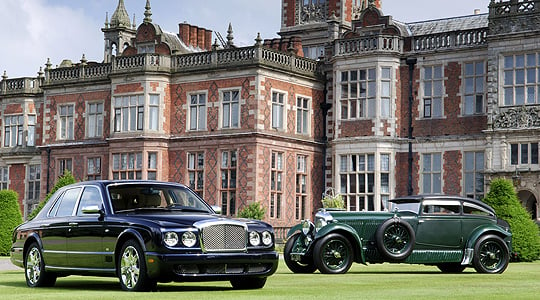
Bentley are celebrating the 75th anniversary of the famous "Blue Train" event where Woolf Barnato raced, and beat, the then fastest method of travelling from the South of France to Calais and London.
Woolf Barnato was at a dinner party on board a yacht near Cannes in March 1930 when the subject of racing the famous Blue Train came up, one guest questioning whether it was possible to beat the train by road from St Raphael to Calais. Barnato wagered £200 that at the wheel of his Speed Six, he could not only arrive in Calais before the train but would be in his London club before the train arrived at the French port. The bet was accepted, and the next day, at 5:45pm, as the Blue Train left the main railway station at Cannes, Barnato and his companion, amateur golfer Dale Bourne set off in Barnato’s Bentley Speed Six.
Barnato and his companion finally reached Calais at 10:30 in the morning, a distance of over 570 miles, having maintained an average speed of 43.43 mph, no mean feat on the dusty and rough roads of the time. After crossing the Channel in a packet steamer and driving hard for almost 700 miles, it was 3:20pm when Woolf Barnato parked his Speed Six outside the Conservative Club in St. James’ Street in London. Just four minutes later the Blue Train arrived at the station in Calais.
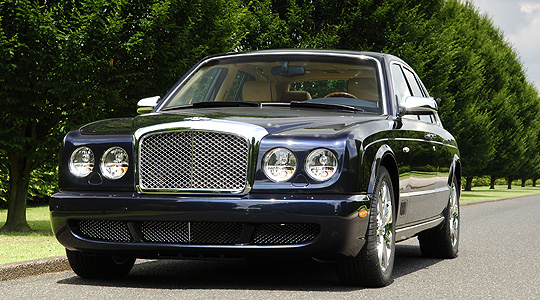
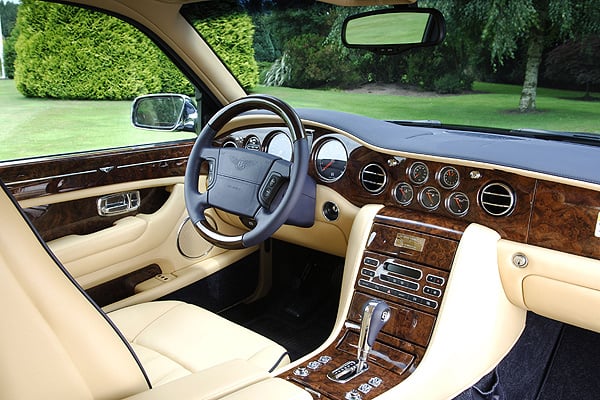
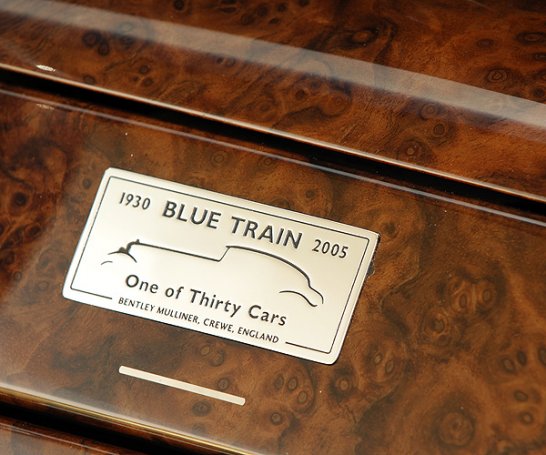
The Arnage Blue Train Series
The car, a product of the Mulliner coachbuilding division, features the 450bhp version of Bentley’s 6.75-litre twin-turbocharged V8 engine, allied to the chassis and suspension set-up of the Arnage R. With a 0-60mph acceleration of 5.5 seconds and a top speed of 168mph the Blue Train Series Arnage has the performance to satisfy the most demanding of drivers. A mountainous 645lb ft of torque (875Nm) available at 3250rpm means that the Bentley’s performance is instantly accessible.
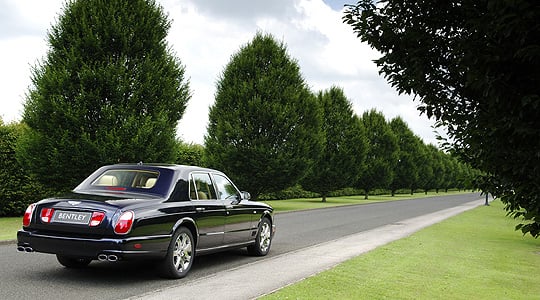
Externally, the Arnage Blue Train Series is distinguished by its 19" seven-spoke alloy wheels, sunroof, chrome radiator shell, chrome mirror caps and quadruple exhaust tailpipes. Both front and rear bumpers are designed specifically for the Arnage Blue Train Series, with stainless steel matrix mesh to the front bumper cooling ducts. In homage to the slatted bonnet of the original ‘Blue Train’ Bentley Speed Six, Bentley’s design team has specified vertical slatted vents, painted in body colour, behind the trailing edge of the front wheel arches. The Blue Train Arnage will carry the black winged ‘B’ inside and out, as the distinguishing mark of the most powerful and performance-focused Bentleys, and will also have Blue Train badging on the front wing and door aperture treadplates. A ‘privacy’ rear backlight may also be specified, another feature which echoes the coachwork of Barnato’s 1930s coupé.
The interior is equally distinctive. All instrument and dial faces are black, and the centre console features a subtle Bentley Blue Train badge. Mulliner’s meticulous craftsmanship is evident in the veneer waistrails, which feature chrome inlay with winged ‘B’ badges, and the ‘Blue Train’ embroidered headrests, in a coordinating thread colour. Other special elements of the interior specification are the wood and hide steering wheel, additional wood veneer panels on the doors and contrast piping on the seats.
A limited number of the Blue Train Series will be produced, the majority being intended for the USA, and all orders have already been filled.
Postscript to the Blue Train story: For many years it was believed that the Bentley Speed Six in which Woolf Barnato beat the Blue Train was a two-door coupé bodied by the coachbuilders Gurney Nutting. Certainly, the Bentley chairman did own such a car; and it was the Gurney Nutting coupé that contemporary artist Terence Cuneo depicted in his excellent painting of the duel.
But recently, Bruce McCaw, present-day owner of Barnato’s Gurney Nutting Speed Six, uncovered evidence that this particular Bentley was not completed until after the date of the dare, which took place in March 1930. It seems that Barnato, who owned a stable of Bentleys, probably raced the Blue Train in his Mulliner-bodied four-door Speed Six saloon, not the coupé.
Commendably the Seattle-based McCaw traced the chassis and engine of the Mulliner-bodied car, and also discovered the bodywork, albeit on a different Bentley chassis. He reunited the chassis with its original bodywork and showed the restored Mulliner Speed Six alongside his Gurney Nutting Speed Six at the Pebble Beach Concours d’Elegance in August 2003.
Text: Classic Driver
Photos: Bentley Motors
ClassicInside - The Classic Driver Newsletter
Free Subscription!





